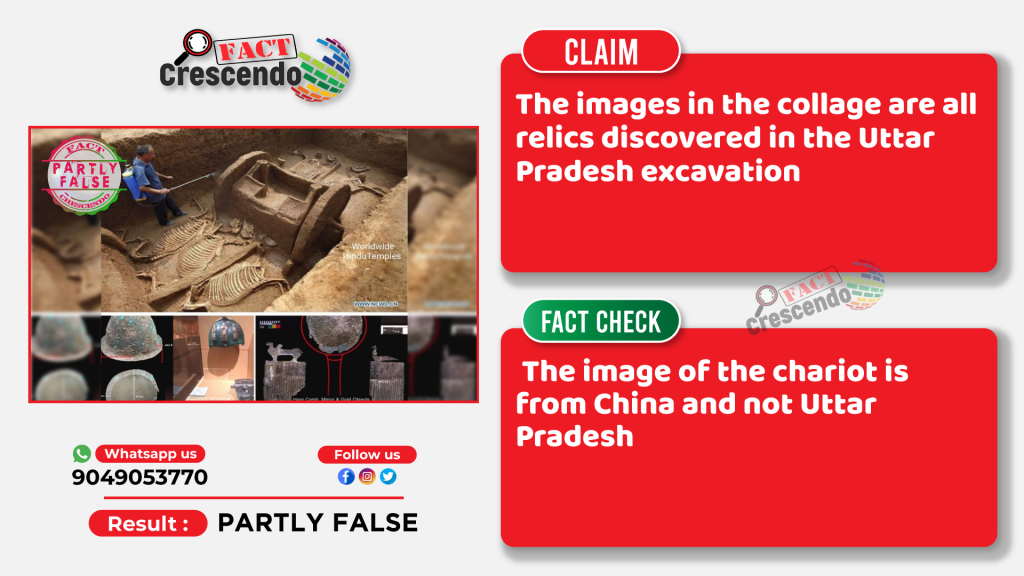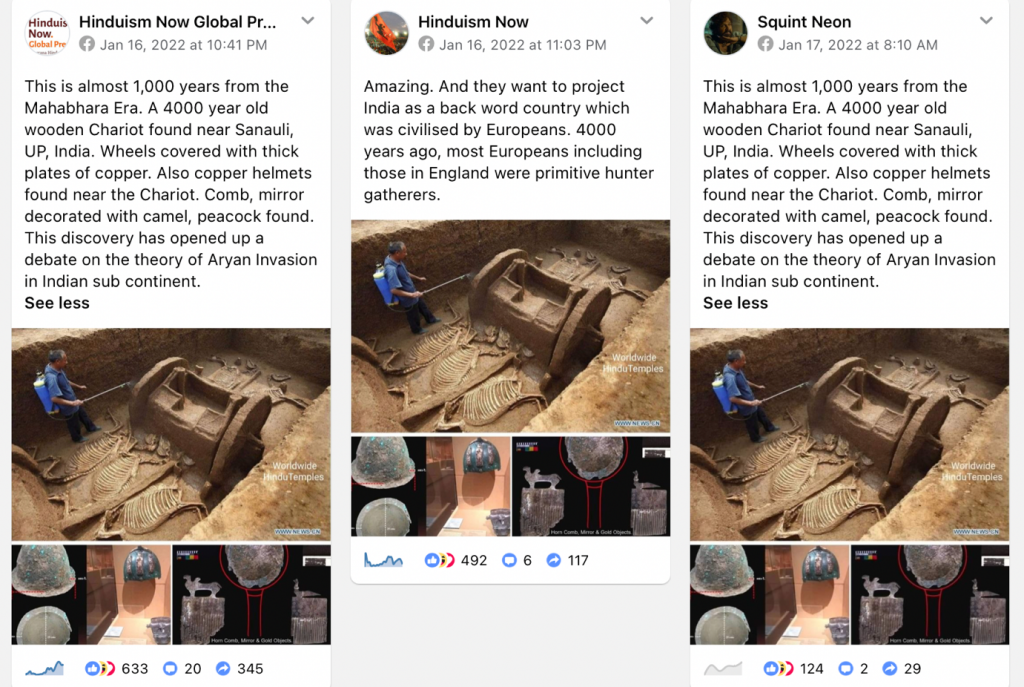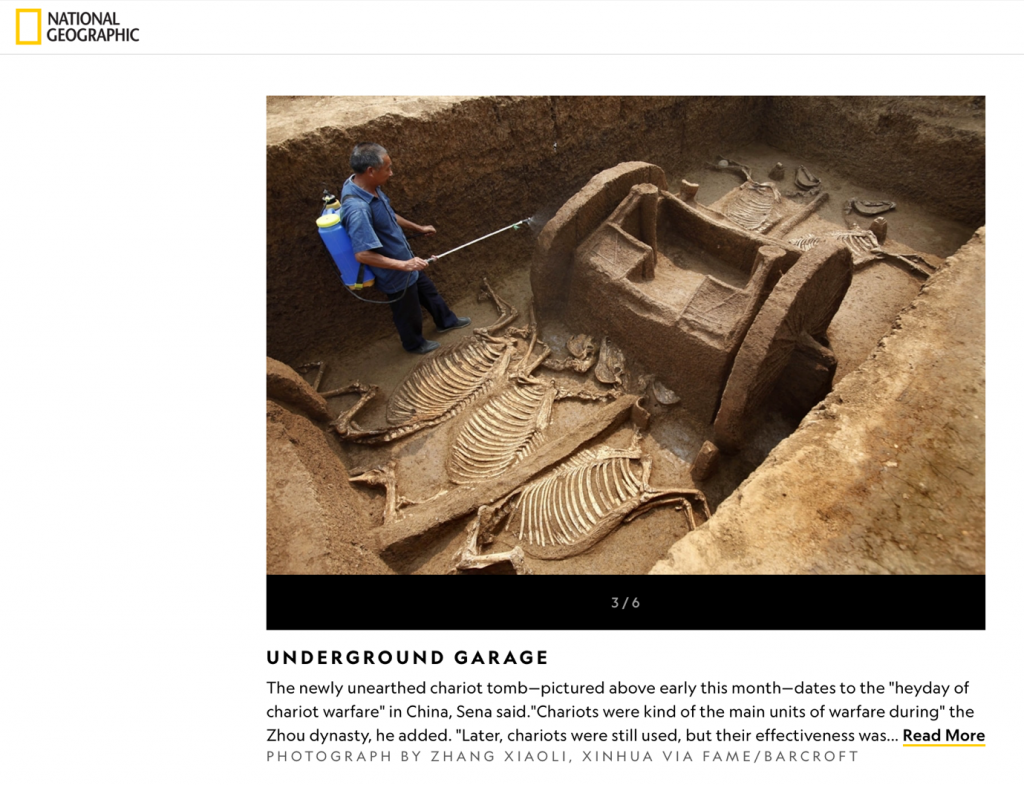
A collage of three images of what looks like helmets, implements and a chariot with the remains of a few animals around it is going viral on social media with a claim that these are images of remains of a 4000 year old chariot in Uttar Pradesh, India. Most of the posts are captioned as:
“This is almost 1,000 years from the Mahabhara Era.
A 4000 year old wooden Chariot found near Sanauli, UP, India. Wheels covered with thick plates of copper. Also copper helmets found near the Chariot. Comb, mirror decorated with camel, peacock found.
This discovery has opened up a debate on the theory of Aryan Invasion in Indian sub continent.”
Here are some such posts:

The posts have been shared hundreds of times.
Fact Crescendo found that the claim is Partly False. Here’s how:
Fact Check Methodology
At first, we ran a google reverse image search with the image of the person spraying something onto the chariot in the viral collage which led us to a photo essay, published on National Geographic on September 29, 2011 with the headline “Pictures: Ancient Chariot Fleet, Horses Unearthed in China.” The description states : Hailing from China’s “heyday of chariot warfare,” five well-preserved chariots and accompanying horses have emerged from an urban tomb.

A photo from a different angle than the viral image of the person spraying something on to the unearthed chariot has been described as a worker spraying water onto a millennia-old chariot unearthed in Luoyang in central China. It also states that overall, 5 chariots and 12 horse skeletons were found in the tomb pit. Reportedly, archaeologists believe the tomb was dug as part of the funeral rites of a minister or other nobleman during the Eastern Zhou dynasty period, about 2,500 years ago.
The description also states that the photograph was by Zhang Xiaoli of Xinhua via Fame/Barcroft.
Following this, we ran reverse image searches on the other two images with relevant keywords and came across this article published on the website The Better India, with the headline “Who Were the Warriors of Sanauli, India’s Largest Burial Site That’s 4000 Years Old.” The article is on “An accidental discovery of ancient artefacts in Uttar Pradesh’s Sanauli village led to an excavation by the Archaeological Survey of India, and findings hint the tribe was of a warrior clan. It also spurred a 55-minute documentary titled ‘Secrets of Sanauli’ by Discovery Plus.”

We came across the other two images from the viral collage in this article. The images are, indeed of relics unearthed at the excavation at Sanauli, Uttar Pradesh.

We also came across this video news report by NDTV, published on October 19, 2019, on the same excavations and saw the same relics in it:
We also came across a news report on Times of India, published on February 22, 2020, that confirms that carbon dating was carried out on the relics to determine how old they were and the results said they were about 3800 years old. Times of India link.
Here is a video posted on YouTube by a user Aditya Bakshi, on September 20, 2019, in which Dr Manjul of the Archaeological Survey of India, speaks about the excavation at Sanauli:
Conclusion
The above evidences make it clear that the image of the parson spraying something onto an ancient chariot is not from Sanauli excavations but is from China. The claim that all the images in the collage are from Uttar Pradesh in India is Partly False as only two of the images are indeed from the excavations at Sanauli, Uttar Pradesh. It is true that the relics found in Sanauli are nearly 4000 years old and further excavations and subsequent studies will help us understand our history better.

Title:This image of an ancient chariot is not from the Sanauli excavations
Fact Check By: Manjori BorkotokyResult: Partly False


